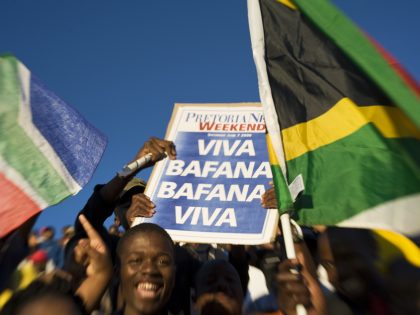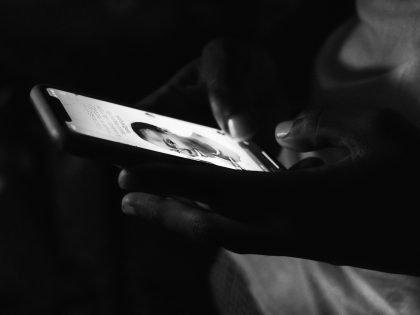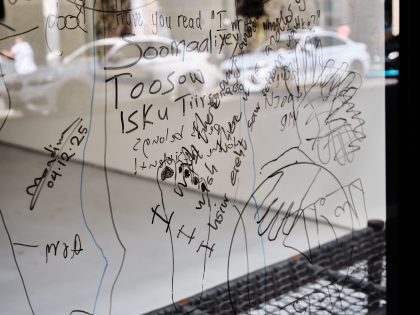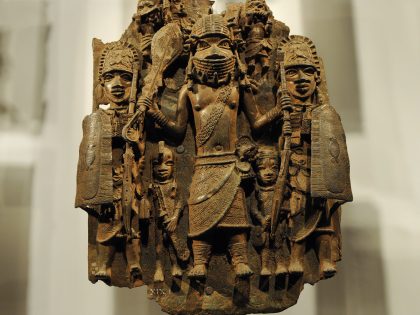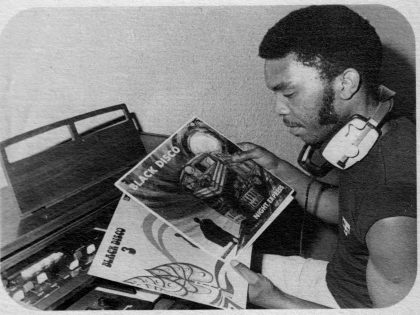Uploading Revolution in Senegal
A new film makes the case that a combination of hip-hop, new media technology, globalization and youth energy inspired Y’en a Marre.

A still from 'Boy Saloum: La Révolte des Y’en a Marre.’
The film ‘Boy Saloum: La Révolte des Y’en a Marre’ by French director and producer Audrey Gallet documents the Y’en a Marre movement in Senegal which took place from early 2011 through early 2012. The film opens with a Franz Fanon quote: “Every generation must, in relative opacity, discover its mission, accomplish it or betray it.” Through this documentary it becomes clear that hip-hop, new media technology, globalization and youth energy and idealism inspired the Y’en a Marre protest movement.
The film is titled Boy Saloum because the founders of the movement all hail from Kaolack, the biggest city of the Saloum province some 200 kilometers from Dakar. People from the Saloum Kingdom were all called Boy Saloum and they are known for their revolutionary spirit.
The Y’en a Marre collective (“We’re Fed Up/Enough is Enough”) emerged as a new political force in Senegalese politics in early 2011. The founders of the movement first organized protests to denounce injustice and inequality and then against the controversial bid by Senegalese president Abdoulaye Wade for a third term in office. 85-year-old Wade proposed constitutional changes that would have ensured his success in the next elections by reducing the number of votes needed to win an election from 51 percent to 25 percent. The changes would have also established the post of vice president to which many claimed he intended to nominate his son, Karim, thus creating a family dynasty. The citizens of Senegal, various sectors of civil society and youth organized by Y’en a Marre said enough is enough. They were simply fed up with years of unemployment, regular electricity outages, increasing inequality and excessive corruption at the hands of President Wade.
In the first scene rapper Thiat of Keur Gui Crew is writing lyrics in a dark apartment by candlelight. The scene quickly shifts to a concert where Thiat and Kilifeu’s lyrics call attention to the worsening poverty, inequality and generational tensions in the country. The concert ends with Thiat telling the audience, “This is a solemn time, the government has abandoned us.” The two scenes, the viewer later learns, are critical because it is Keur Gui’s history of social engagement, an extended power outage and Wade’s increasing corruption and trampling on democracy that inspire the formation of the movement.
Sofia Denise Sow, the narrator, is also a founding member of the movement who has preferred to stay behind the scenes. It is no coincidence that Sofia tells the story of Y’en a Marre because she was primarily responsible for maintaining the internet presence of the collective. She regularly uploaded music videos, interviews and video clips showing the arrest of several members. She also posted to Facebook and sent out mass text messages informing the population of protests dates and times. The film crucially allows this woman who played an essential role in the movement to take a place at center stage right next to her male comrades.
The musicians of Y’en a Marre often play a central role in the coverage of the movement particularly as discussions of the role of hip-hop in social movements became popular in the wake of the Arab Spring and youth organizing in general. Boy Saloum introduces the backstory of Fadel Barro, the journalist who urged the rappers to use their popularity among fans to affect change in their country. Barro, the national coordinator of the movement, was an investigative journalist for a weekly newspaper and regularly wrote articles about Wade’s presidency and growing corruption in Senegal. Since his engagement in Y’en a Marre he is no longer on staff with a newspaper and his apartment became the headquarters for the movement.
While there have been numerous articles describing the origins of Y’en a Marre, the film lets the founders describe in their own words how the movement was started. The film moves past flashy headlines that continually assert that Facebook, Twitter, YouTube, and other social media platforms are the primary organizing tools of modern day social movements. Gallet’s film shows that the collective built the movement first through personal social networks with other rappers and journalists and then by taking the message directly to the people. The bulk of their time was spent in communities around the country explaining that the goals of the movement did not solely include getting Wade out of office but also encouraging a “New Type of Senegalese” (NTS), basically a new socially engaged citizen.
Gallet explained that she did not make this movie by chance. She had been filming Keur Gui concerts, speeches and their active efforts to engage youth from 2006. When Y’en a Marre emerged, she was in a prime position to document the creation and growth of the movement. The access she was granted proved essential for allowing audiences to witness the coming together of a movement.
One critique of the movie is the sole focus on the founders from Kaolack while not including the other rappers who were integral to the movement from nearly its inception. This however is not an issue among the collective as Fou Malade, one of the core Y’en a Marre members, noted at a conference at New York University, “I became involved in Y’en a Marre for a lot of reasons but one of the main reasons is because when Thiat calls, you pick up your phone.” If there were anything else missing, it would be a soundtrack to accompany the film since music and specifically hip-hop played such a critical role in the Y’en a Marre movement.
Ultimately, Gallet’s film gives audiences an insider’s view into the inner working of a contemporary social movement.
Watch the film here:
A version with English subtitles will be available to the public soon. We’ll remind you when it is.

